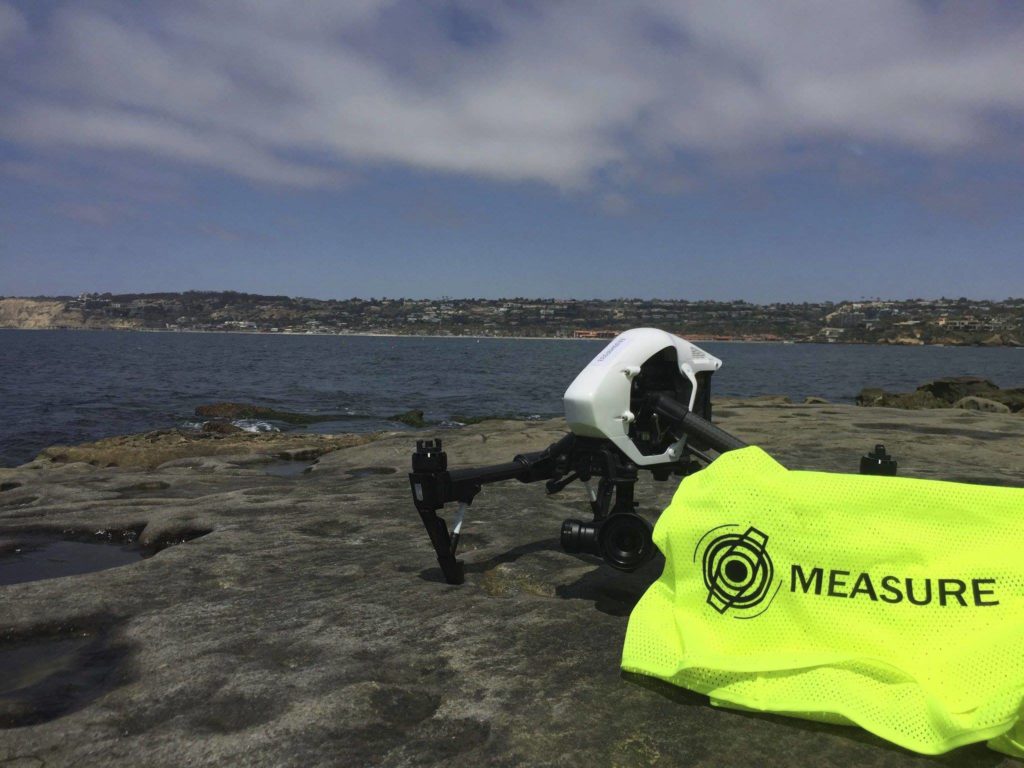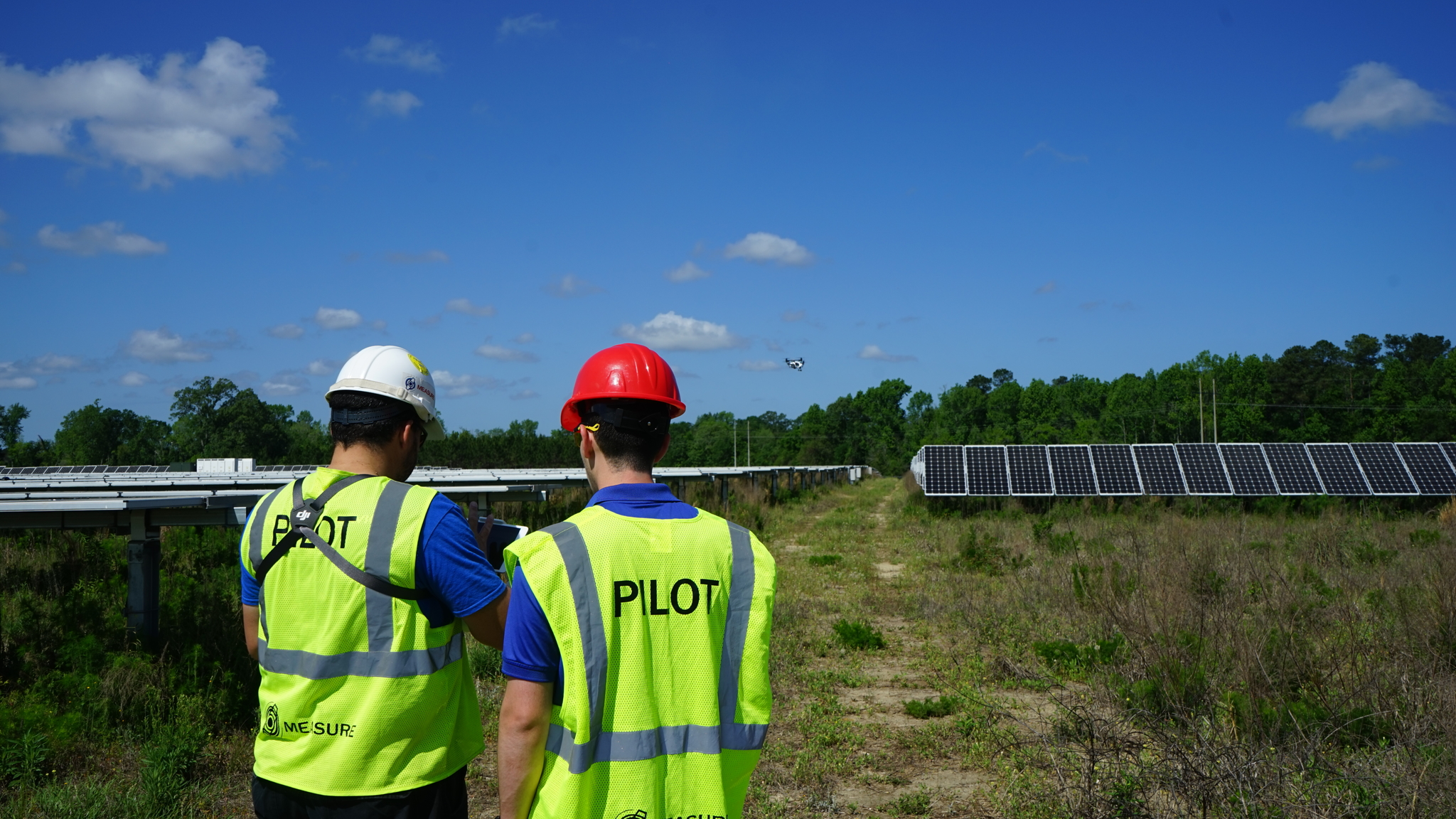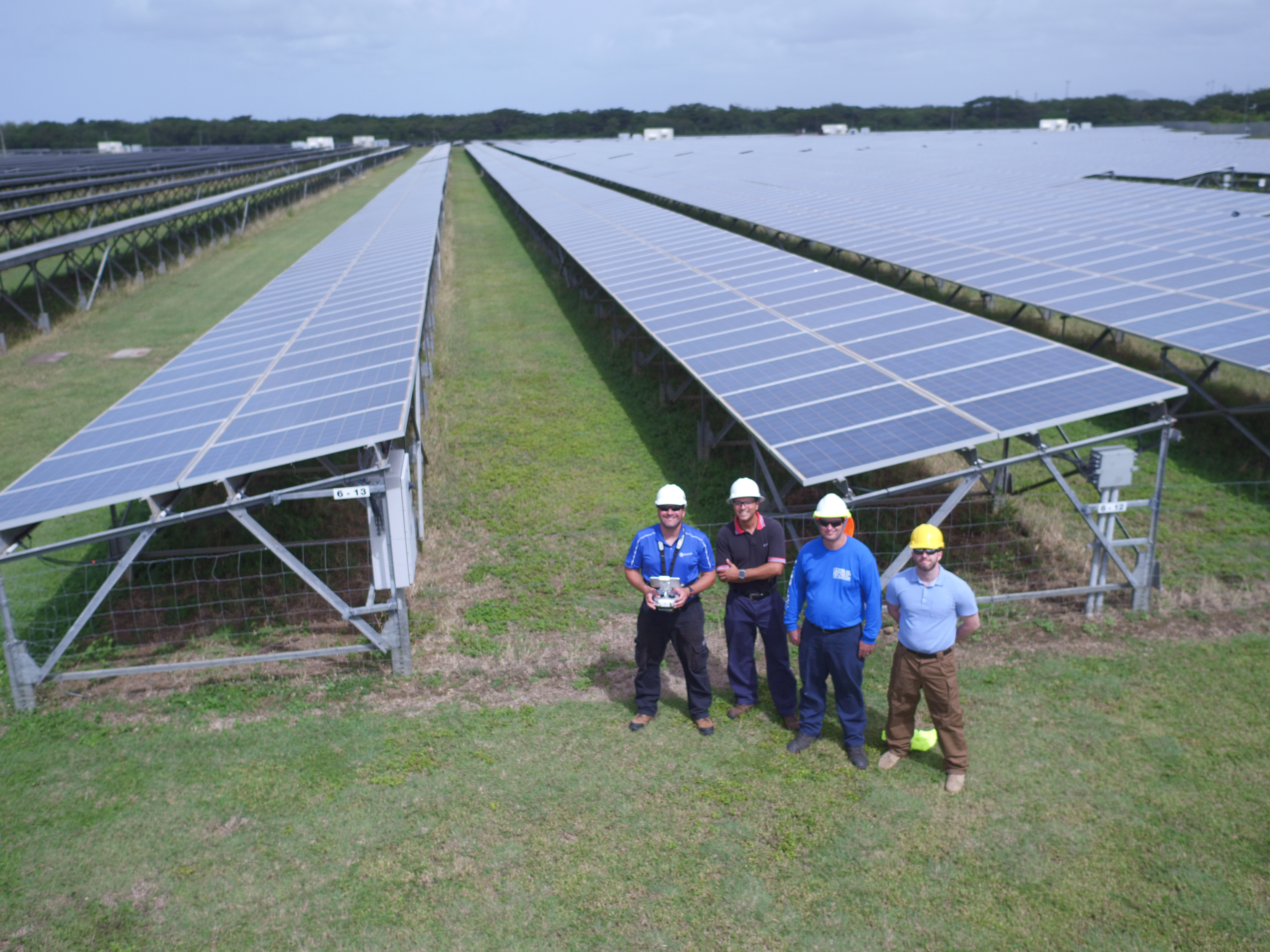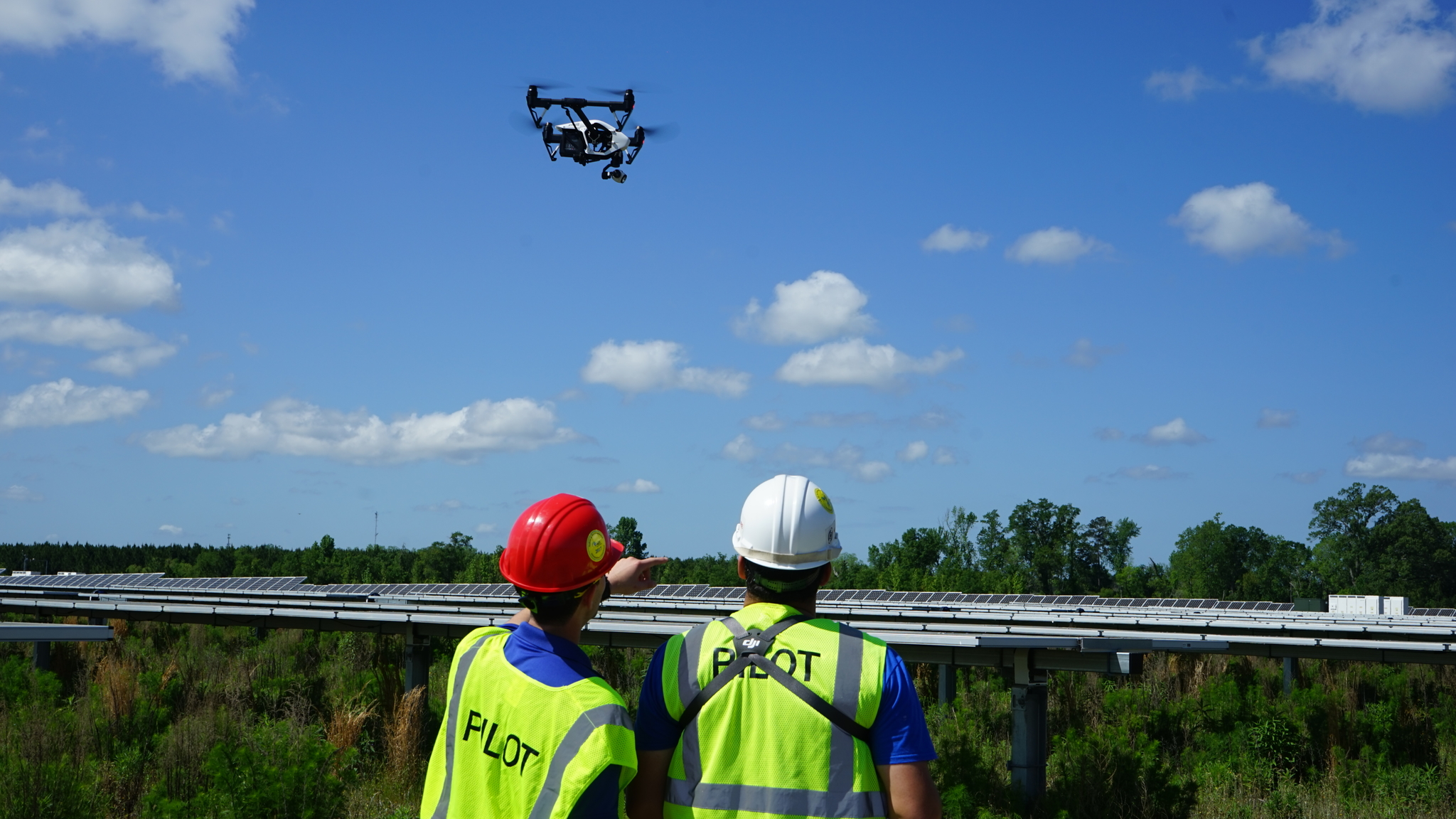Without a doubt, the popularity of drones has skyrocketed in recent years. While improvements in the underlying technology have made drones easier to control and operate, incredible progress has also been made regarding their range and security. These features allow drones to be applied in a variety of fields, such as farming, delivery and aerial imaging. Even major companies such as Amazon and Microsoft have recognised the promise of drones and are planning to integrate them into their business operations. Given the plethora of problems that this revolutionary technology could potentially alleviate, it is important for individuals and companies to understand its significance.
Measure is an aerial intelligence company which provides a number of services related to the use of drones in business. Measure can collect and analyze data from aerial imagery to help management teams make more informed decisions. It can also offer advice on the benefits that drone technology could bring to a business, and on the effective use and management of drones. Being able to adapt and use drones in the right way through Measure’s services could help many companies to succeed.
We spoke with Measure’s Chief Operating Officer, Jesse Stepler, to learn more about his company, the kind of services they offer, and the challenges they face in this fast-growing market.
 In the Photo: Measure COO Jesse Stepler. Photo Credit: Measure.
In the Photo: Measure COO Jesse Stepler. Photo Credit: Measure.
When was Measure first established? What did you want to achieve back then?
Jesse Stepler: Measure was established in 2014, around the time when drones were starting to get popular. We started off doing some work with the American Red Cross and the American Farm Bureau, along with a number of large agricultural businesses, insurance companies, as well as state, local, and Federal entities that were interested in the technology. Our first job was in “disaster response” because of the benefits of aerial imagery in the aftermath of a disaster. There have been studies to show that if you can expedite the recovery process by even a short amount of time, this could massively benefit the affected communities.
Our focus has always been drones for collection of aerial intelligence. We know that there are also companies that provide drone delivery services, including dropping life preservers to people in distress or delivering blood to remote medical clinics, but, for us, the most important things would be the aerial imagery and the data being gathered from the drone.
Where did you go from there?
JS: About a year in, the FAA introduced some new regulations that opened up the skies a little bit and made drones much more commercially viable. That’s when we got the precedent-setting exemption pass with the FAA, where you can get approval to fly larger numbers of aircraft for a wider variety of applications. Concurrently, we were also starting to build out our operational experience: from just the disaster response and agricultural work that we had been doing, to more of a focus on infrastructure inspections.
We did a series A investment round, raised $5 million to start building our professional flight services division based on military aviation experience, full time pilots, putting in place policies, standard operating procedures, training programs, and basically everything necessary to provide safe legal insured operations to large customers, because we found that this was what they wanted. We also set up a data engineering team, so that people with backgrounds in geographic information systems who had programs like Autodesk and Bentley products could help plan out data capture, take the raw imagery and turn it into finished data products which were really actionable, so customers could make better decisions.
Throughout all of this, we never wanted to be in hardware as we did not view it as our core competency. There were a lot of companies doing it, and a smaller number doing it well, so we really focused just on pulling things off a shelf, hardware and software, and putting the workflow around all of them to provide value to our customers. We expanded the verticals we were in to telecommunications and energy as well as construction and engineering. We also had a groundbreaking drone delivery program here in the US that we did for a large customer who provided a package delivery to paying customers which was interesting, but we still stayed focused on aerial intelligence. We did a series B investment round last year, raising about $22 million, and then continued to expand.
Two years ago, we started seeing customers who wanted to fly drones in-house and also access third-party services. The technology was similar to the aircraft of DJI. If you’re familiar with the DJI when they started introducing the Phantom 3, the Phantom 4, and the Inspire series aircraft, these aircrafts were intuitive enough and high-quality enough that part-time operators from large companies could accomplish basic tasks with them and achieve value. They started asking us to help them do that, so we started standing up in-house drone programs as well. Very often, we took the hybrid approach, so that customers could continue to request our services and ask us to put in place their own internal policies and procedures, train their people, equip them with drones, as well as provide them with software, support, data management and engineering services.
After you became fully established, how did you decide which direction to take?
JS: About a year ago we were looking across the universe of software and we were very frustrated because we were stringing together eight to ten different solutions to make operations work. It’s one thing to do that internally for your own pilots who work full-time, but it’s another thing to try and manage a customers’ employees who have nine jobs and number ten is flying a drone, while utilizing drone software solutions to accomplish their tasks with the drones.
We looked across the drone software universe and did not see anything that was meeting that need, so we decided to build it ourselves. That is how we added software development to our core business. We translated all of our operational experience into that software platform for managing drones, for managing operations, for automating flights, and for managing and processing all of the data that has been captured. This is where we find ourselves today. We still provide completely outsourced services, we still provide support to in-house programs, but at the center of all of that is our software Ground Control: a mobile application for controlling the drone which is connected to an enterprise cloud-based secure platform for managing large numbers of people, drones and data.
In terms of primary industry verticals which we are in today: energy is a big one for us, as we do plenty of work on transmission and distribution, on solar farms, on wind turbine inspections, and on thermal plant inspections. We work in the construction and engineering space, yet we also have a separate division that is more entertainment-filming, called “M2”. There is a big difference in the talent and skill set that goes into shooting for entertainment as compared to shooting for infrastructure inspection, with both areas involving different types of pilot training. Therefore, we have a separate business unit that does the entertainment side.
The primary value proposition for our customers today is something that we can quantify: it’s about improving efficiencies, reducing costs, increasing production, and improving safety. We track hazardous man hours that have been avoided by using drones, and we track the benefits of doing things like fixing cracks in wind turbines, detecting dead strings of solar panels, and detecting chipped insulators in transmission or distribution lines.
 In the Photo: Measure pilots. Photo Credit: Measure.
In the Photo: Measure pilots. Photo Credit: Measure.
You mentioned that there are a few companies that do similar things. Is there any serious competition or does everybody have their own niche?
JS: It’s incredibly competitive, and depending on the part of the market that you’re in, it can also be quite crowded. DJI has made drones widely accessible, so there are a lot of small local-service providers alongside some larger companies in the field. If you look at the bigger players and the space, there is some overlap and competition. However, there is also some complementarity, so it really depends.
You have companies like Dronebase which is a network of pilots; they actually have the largest network of pilots in the world, and a platform that allows customers to order services from these pilots. That network is made up of part-time operators, so historically they have done the simpler missions. They’re not doing wind turbine or transmission tower inspections, instead they’re doing rooftop inspections for insurance purposes or filming for real estate purposes. Then you have companies that do data visualization, with a good example of this being DroneDeploy. Another important thing to note is that DroneBase did a $12 million raise this year. DroneDeploy did a $25 million raise. So, they are still gaining speed.
You’ve also got companies that are more focused. In the agricultural space you have a company called Slantrange which is very much focused on just agriculture, and they have a sensor and a software package for farmers. Then you have companies that are focused just on public safety or fleet management, essentially managing aircraft. So, on one hand, you have companies focusing on individual pieces of the market such as public safety, construction, infrastructure. On the other hand, you have companies focused on different horizontals, such as pilot networks, managing aircraft and pilots, managing data, processing and analyzing data, or creating artificial intelligence algorithms that automate some of the data analysis. Lastly, there are companies that try to do everything, so it is really a diverse mix. However, it remains quite competitive.
 In the Photo: Solar panel observation and testing. Photo Credit: Measure.
In the Photo: Solar panel observation and testing. Photo Credit: Measure.
Do you ever get people not willing to adopt new technology, or are people more open to accepting drones?
JS: Drones will always get you in the door. I would say that people listen, and they are always interested. Now, getting from that to a proof-of-concept or pilot project requires significantly more effort, but the real challenge the industry has is going from (1) the proof-of-concept or pilot project, which I define as a small number of operations per year that you are outsourcing and/or you have 3-5 people in-house who are flying drones on a semi-regular basis to (2) the point where you are conducting tens or hundreds of either in-house or outsourced operations, more likely somewhere between ten and a hundred, to (3) the point where you have hundreds of employees trained in operating drones; basically the point where you’re managing hundreds of pilots, hundreds of aircraft, and thousands of flights, either in-house, outsourced, or both, and a substantial number of terabytes that come off of the drones, is quite challenging.
Getting to that point is something most companies have struggled with to this day, with the adoption in the industry rate right now being somewhere around 10% overall. Pretty much every large company at this point has done something with drones, but that doesn’t mean that they are integrated into their daily operations. For any energy company you point to, there is a good chance that they’re using drones, that they have used drones, or that they have paid somebody to fly to inspect their infrastructure with drones. Most insurance companies have some experience with it as well. But the number of companies that are using drones on a daily basis, and, more importantly, that have them integrated into their business processes and enterprise software, is still very small.
 In the Photo: Pilots testing drones. Photo Credit: Measure.
In the Photo: Pilots testing drones. Photo Credit: Measure.
What’s the ultimate mission for the drone industry?
JS: If you think about the Internet of things (IoT) and its progression over time, drones increase assets, regardless of whether they are fixed assets or mobile assets or people. They are connected to enterprise software, to your enterprise resource planning, and to your asset management systems. Drones are a huge potential part of that, and that is ultimately the only way it works: they have to be completely integrated. You can’t have this type of stove-piped technology, because although its a great source of data, it is still only one source of data, and there are other sources of data that need to be layered on top of it that need to be combined with the aerial intelligence that drones are collecting.
Ultimately, the value proposition is the ability to digitalize the physical world, and that provides context for other parts of IoT. So you can see that an asset might be malfunctioning, but now drones offer the ability to actually visually take a look at that asset halfway around the world.
How do you see Measure growing in the future?
JS: I think that the jury is still out on which sectors are going to be the fastest adopters of drones. We have seen evidence of adoption in different areas, but I think the jury is still out on that. Primarily, we are a company that’s about people processing equipment. We specialize in managing workflow and that’s why we decided to get into the software space. It’s software that is designed by real-world experts, and that is supported by people who know what they’re doing.
That’s what sets us apart, not simply that we have a great technology stack and great software. While these are true, they haven’t been built in a vacuum. We use our software ourselves, we support it, and it was designed with professional drone operators, drone engineers, data engineers, along with a plethora of industry experts: people with backgrounds in everything from law enforcement to utilities to insurance, providing insight on how to build this to make it more effective.



 In the Photo: Measure COO Jesse Stepler. Photo Credit:
In the Photo: Measure COO Jesse Stepler. Photo Credit:  In the Photo: Measure pilots. Photo Credit:
In the Photo: Measure pilots. Photo Credit:  In the Photo: Solar panel observation and testing. Photo Credit:
In the Photo: Solar panel observation and testing. Photo Credit:  In the Photo: Pilots testing drones. Photo Credit:
In the Photo: Pilots testing drones. Photo Credit: 




